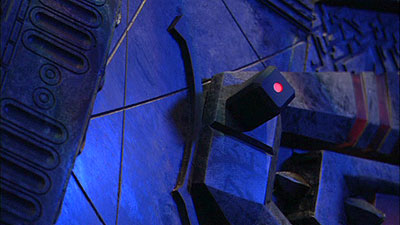LOCATOR BEACON

The Asgard had installed transport beam technology on the Prometheus, but without Asgard sensors, the Prometheus relied on locator beacons to pinpoint specific targets. SG-1 carried small portable locator beacons to tag objects in advance and to signal the beaming technology remotely. The beacons most often appeared as small square devices no more than 1 to 2 inches wide with a glowing red light to indicate activation, and a strap allowed them to be worn on an arm, wrist, or ankle. The beacons, which operate in subspace, could be traced using NSA satellites, but the frequency could be changed to avoid detection.
Rogue elements of the NID known as the Trust also acquired the beaming and locator technology through Dr. Bricksdale at Area 51 when his experiments with Osiris's wrist device succeeded in activating the transport beam and locating Osiris's abandoned ship. Guided by a locator beacon, the Trust used the technology to steal the stargate from the SGC, but the Prometheus was able to tag the stolen gate and beam it back aboard.
Following the destruction of the Prometheus at Tegalus, Asgard beaming technology became an integral part of the Odyssey. However, also during the mission to Tegalus, Daniel had been taken prisoner and his locator beacon was confiscated, making a rescue with beaming technology impossible. Following that incident, the SGC began using new locator chip implants. These subcutaneous transmitters make it possible to locate, trace, and target implanted individuals. SG-1 was the first to receive the new technology, and members of SG teams and the Odyssey crew are now routinely implanted. The portable locator beacons continue to be used to tag individuals or objects which had not been implanted, for example during the retrieval of stolen stargates or the capture of Adria.
Cross Reference: Asgard Transport Beam, Odyssey, Prometheus, Subcutaneous Transmitter, Trust
Episode Reference: Endgame, Full Alert, Ethon, Off the Grid
